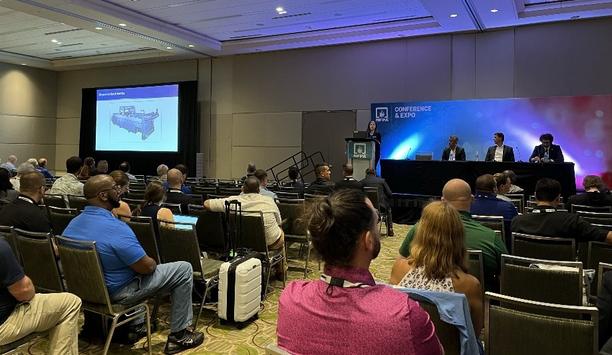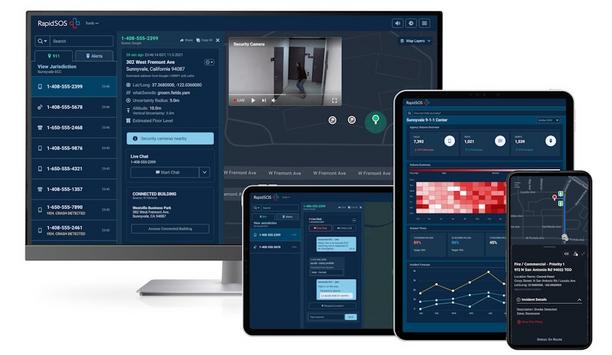There are 200 video cameras keeping watch throughout five Western United States to provide early warning of wildfires. In the near future, the number of cameras will be growing dramatically. Soon there will be more than 1,000 of the cameras in California alone, keeping watch on thousands of acres at risk of destructive events like last year’s deadly Camp and Woolsey wildfires.
The ALERTWildfire cameras are installed through a consortium of universities – the University of Nevada, Reno; the University of California, San Diego; and the University of Oregon. Dozens of partners also participate in ALERTWildfire, including the National Forest Service, other government agencies, utilities and other private companies, state and local fire departments, and NGOs (non-governmental organizations).
“It takes a lot of people, pushing in the same direction, to deploy cameras rapidly,” says Graham Kent, University of Nevada, Reno. “We are connected into the community, which is a positive thing.”
Monitoring Fire Behavior
The cameras monitor fire behavior until it is contained, enhance situational awareness during evacuationsThe cameras can provide early warning when a fire starts and help firefighters and first responders scale the resources needed to respond. The cameras also monitor fire behavior until it is contained, enhance situational awareness during evacuations, and ensure fires are monitored appropriately through their demise.
ALERTWildfire currently uses Axis Q6055-E outdoor-ready pan-tilt-zoom network cameras that provide 1080p HDTV signals, 32x zoom and low-bandwidth compression. (Earlier versions of similar Axis camera models were also installed previously.) The camera’s robust aluminum casing can withstand temperatures up to 140 degrees F, although the cameras are positioned on the top of towers where temperatures from wildfires are not a factor.
In addition to cameras, each installation site includes a range of equipment including hard power or solar power (on about a third of installations), both with battery backups. Resilient, hardened microwave/fiber networks carry video signals from the cameras to servers at University of Nevada, Reno, which makes them available on the Internet. Geolinks, an ALERTWildfire partner, provides resilient Internet connectivity to mountaintops throughout the West.
Watching Fires On Mobile Devices
Dispatchers around the West have access to video from the cameras, and fire management can move the camera views through their iPhones. Firefighters can even watch fires on their mobile devices while they are en-route to a fire. Cameras are located currently in California, Nevada, Idaho, Washington and Oregon. There have been 85 cameras in place for five years or so, and the number of cameras has more than doubled since the beginning of 2019.
 |
| Firefighters can even watch fires on their mobile devices while they are en-route to a fire |
The accelerated installation schedule is courtesy of a new policy of using existing infrastructure for cameras rather than creating it from scratch. The large number of cameras on the horizon for California is being funded by utility companies such as Pacific Gas & Electric (PG&E), Southern California Edison and San Diego Gas and Electric.
AI-Enabled Monitoring For Early Warning
The public can view the camera feeds and often call 911 to report early warnings of fires, thus providing a kind of crowdsourcing, a fire-warning version of ‘Neighborhood Watch’. In the future, artificial intelligence (AI) could be used to monitor the video feeds to provide early warning. For now, the system is largely used by 911 dispatchers to confirm reports of fires. “Cell phones are so ubiquitous, people call in fires before the AI could react,” says Kent. “We could never beat 911.
A model for early detection of wildfires is in operation in San Diego, where San Diego Gas and Electric manages an emergency center that uses sophisticated real-time modeling to predict fire events based on weather conditions, vegetation, etc., tracked on a threat map. The system enables firefighting resources to be deployed quickly at the first hint of fire and thus to avoid a larger, sweeping wildfire event.
The system enables firefighting resources to be deployed quickly at the first hint of fire and avoid a larger, sweeping wildfire event
“If you can get on top of it quickly enough, it makes all the difference,” says Kent. “In the case of extreme conditions, 10, 20 or 30 minutes can make a big difference.” Other locations are looking to replicate the San Diego model to discover and confirm fires quickly and then reposition assets to respond. Phos-Chek long-term fire retardant, applied by air from a fixed or rotor-wing aircraft, is used to slow or stop the spread of wildland fires.
Early Warning Of Other Emergencies
Installing more cameras to provide early warning of wildfires is “a grave need in the Western states,” and the system is likely eventually to be deployed in other areas, too. Wildfires can be a challenge in non-Western states such as Florida and Oklahoma, and a similar approach could also be used to provide early warning of other emergencies, such as tornados. “Once we do the West, we will be looking to do the rest of the United States,” says Kent.
Currently, the biggest challenge is keeping up with demand. “Our successes have led to a demand to get more cameras out right now,” says Kent. “Funding isn’t the largest issue. The money is there to do it, but we have to be able to scale up quickly, working with partners. It’s a wild ride.”
Key words for success of the ALERTWildfire system are “location, location, location” combined with “coverage, coverage, coverage,” says Kent. “We can solve 90 percent of the problem with coverage.”







































